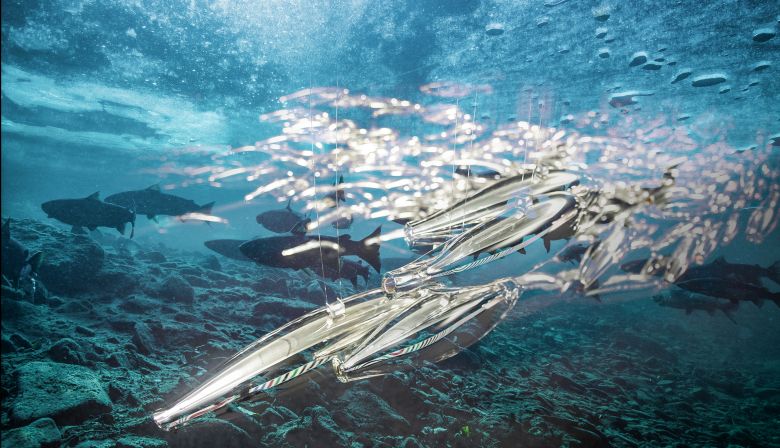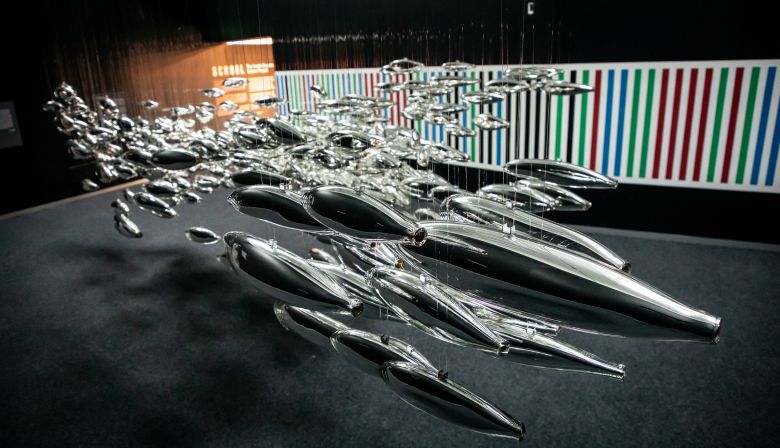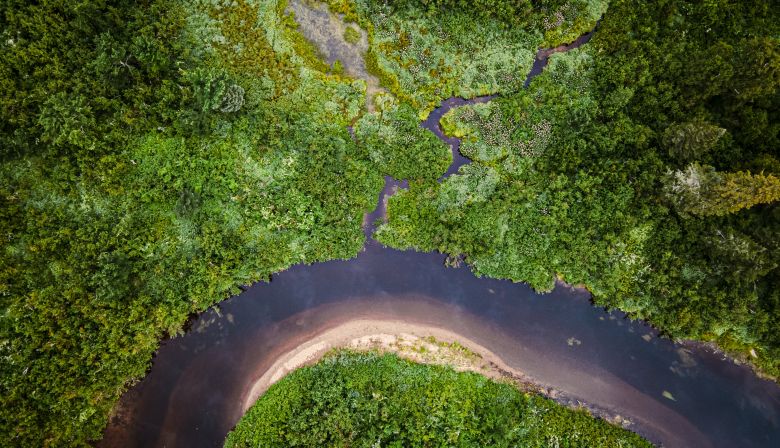And that’s exactly where collaborations like Salmon School come in. Working with artisans from around the world, renowned artist Joseph Rossano created 350 stunning, reflective blown-glass salmon forms, a “school” that now hangs in the heart of COP26. The sculpture represents the fragility of wild salmon, but it also symbolizes hope. Seeing this beautiful installation daily, delegates have a constant reminder of what’s at stake. And—we hope—they’ll be inspired to make the right decisions.
Bringing wild salmon conservation to the world’s largest and most important climate change conference took real teamwork. The Atlantic Salmon Federation (ASF) worked with a global partnership to make it happen. Our coalition includes UK’s Atlantic Salmon Trust and Missing Salmon Alliance, Salmon Nation and the Wild Salmon Center on the Western coast of North America, as well as the Smithsonian. Our collective presence at COP26 is united around a simple message: wild salmon need “Cold, Clean Water.”
Of course, it’s not just about salmon. Whole ecosystems, global biodiversity, and human civilization all hang in the balance. But Salmon School shows that these are one and the same. The work we’re already doing to ensure wild salmon have cold, clean water also contributes to climate change mitigation.
Creating broad-scale, meaningful land protections and reducing deforestation sequester significant amounts of carbon. Removing dams and restoring freshwater habitat create climate resiliency. By safeguarding salmon watersheds, we’re helping the planet help us.
In short, if we ensure cold, clean water—if we get it right for wild salmon—we’ll also be getting it right for the planet, ourselves included. Joseph Rossano’s remarkable sculpture brings this message to COP26, and our partnership is bringing it to a global audience.


